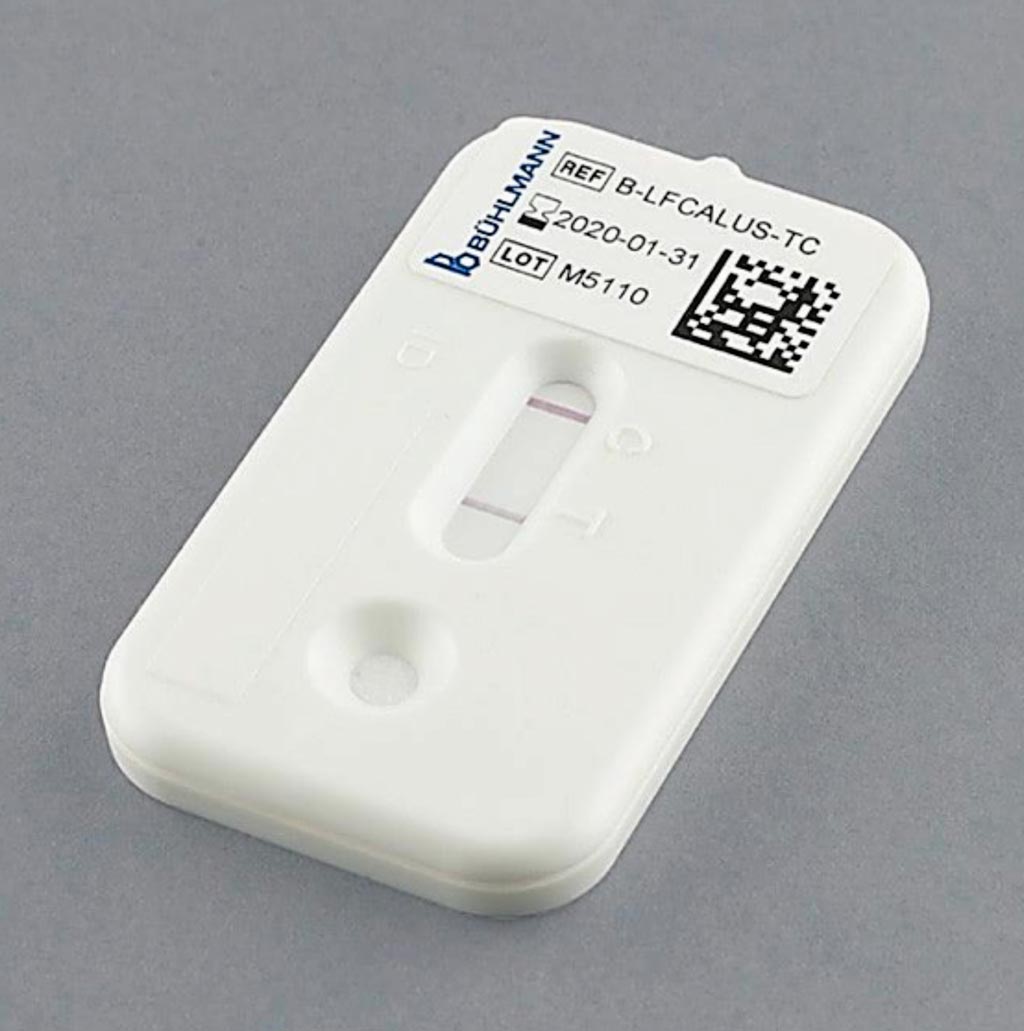Fecal Calprotectin Predicts Complete Mucosal Healing in UC
By LabMedica International staff writers
Posted on 13 Nov 2017
Ulcerative colitis (UC) is a chronic inflammatory bowel disease (IBD) characterized by a disease course involving relapses and remissions. Historically, clinical remission was the major treatment target for patients with UC.Posted on 13 Nov 2017
The use of repeated endoscopy to verify mucosal healing (MH) is invasive, inconvenient, and expensive, and may present a risk of significant complications such as colonic perforation. Therefore, noninvasive surrogate markers indicating endoscopic healing have been investigated to replace the repeated endoscopic procedures.

Image: The rapid Quantum Blue Fecal Calprotectin lateral flow test (Photo courtesy of Bühlmann Laboratories).
Scientists at the University of Ulsan College of Medicine (Seoul, Republic of Korea) collected 181 fecal samples from 181 consecutive UC patients between April 2015 and September 2016. Collected data included birth date, sex, date of UC diagnosis, family history of IBD, smoking status, maximum disease extent, and medications. The laboratory test results, partial Mayo Score (pMS), and colonoscopic imaging findings at Fecal Calprotectin (FC) level measurement were retrospectively reviewed.
FC levels were measured using the Quantum Blue Calprotectin rapid test (Bühlmann Laboratories AG, Schönenbuch, Switzerland), and high-range kit measuring 100–1,800 mg/kg was used. The following laboratory parameters were recorded at the time of FC level measurement: complete blood cell count on the XE-2100 (Sysmex Corporation, Kobe, Japan), including white blood cell count, hemoglobin level, hematocrit value, and platelet count; erythrocyte sedimentation rate (ESR); and serum chemistry values on the Cobas 8000 modular analyzer (Roche Diagnostics, Basel, Switzerland), and the AU5800 (Beckman Coulter, Brea, CA, USA), including C-reactive protein (CRP) and albumin levels.
The investigators found that among the biochemical markers, FC levels exhibited significant correlations with the CRP and serum albumin. The other laboratory values including white blood cell count, hematocrit values, platelet and ESR exhibited weaker correlations with the FC levels, as compared to both the CRP and serum albumin levels. The FC cut-off level of 187.0 mg/kg indicated complete mucosal healing with a sensitivity and specificity of 0.857 and 0.891, respectively.
The authors concluded that the FC level is significantly correlated with the clinical disease activity index, endoscopic indices, and serum inflammatory biomarkers in a Korean UC cohort. FC is highly predictive of complete mucosal healing in UC. UC endoscopic index of severity (UCEIS) exhibits a stronger correlation with the FC level; as compared to the Mayo endoscopic subscore (MES). Thus, FC could be used as a reliable noninvasive indicator for evaluating disease activity and mucosal healing in UC. The study was published on October 23, 2017, in the journal BMC Gastroenterology.













